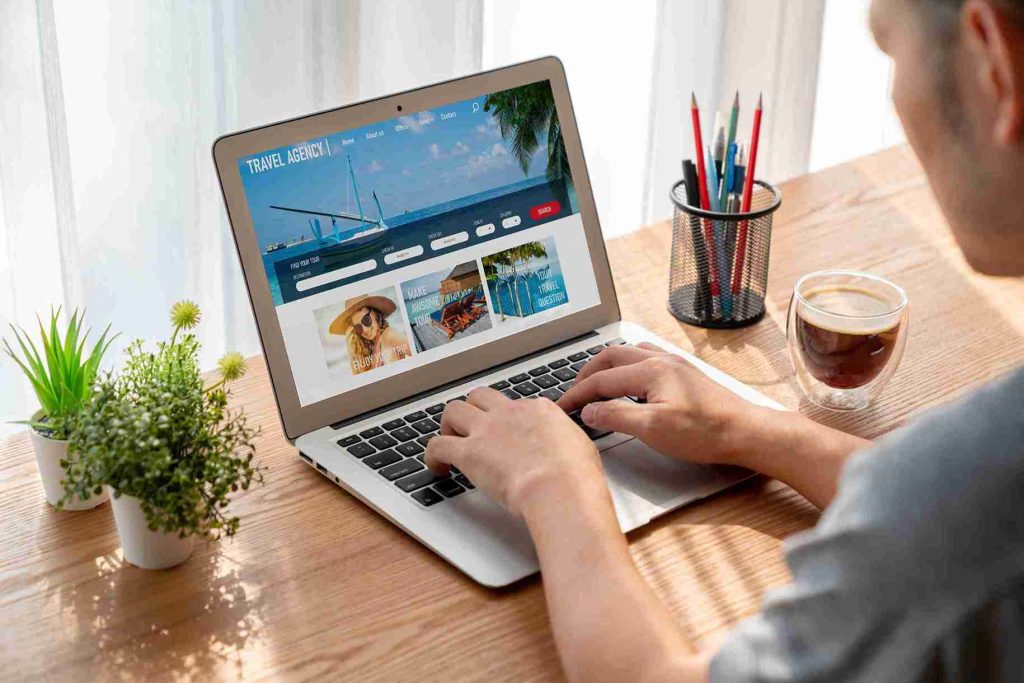Learning how to start a website for a small business is crucial in today’s digital landscape. A website acts as the central hub for potential customers to learn about products or services, engage with a brand, and make purchasing decisions.
For small business owners, understanding the full process from selecting a domain and platform to creating content and launching the website ensures a professional and effective online presence. This guide offers a detailed overview of how to start a website for a small business and provides actionable advice to set up a successful site.
1. Choosing the Right Website Platform

The next step in understanding how to start a website for a small business is selecting a website platform. The platform affects how the website is designed, managed, and updated. Popular options include content management systems such as WordPress, website builders like Wix or Squarespace, and e-commerce platforms such as Shopify. WordPress provides flexibility, a variety of plugins, and scalability for growing businesses.
Wix and Squarespace offer intuitive interfaces suitable for beginners. Shopify is ideal for businesses that focus on online sales because it includes integrated payment systems and shipping management. Choosing a platform that aligns with your business goals and technical capabilities simplifies website management and improves functionality.
2. Planning Website Structure and Content

Planning the structure and content is an essential part of how to start a website for a small business. A clear and organized site structure helps visitors navigate easily and find relevant information. Common sections include a home page, an about page, a products or services page, a blog or resources section, and a contact page.
Content should be clear, informative, and valuable to the target audience. Incorporating variations of the keyword how to start a website for a small business throughout headings and text enhances search engine optimization. High-quality content establishes authority, engages visitors, and encourages them to take desired actions such as making a purchase or inquiry.
3. Designing the Website

Website design is a crucial element in how to start a website for a small business. A professional design enhances credibility and improves user experience. Color schemes, fonts, and layouts should reflect the business’s branding. Mobile responsiveness is essential because a significant portion of website traffic comes from mobile devices.
Navigation must be intuitive, and important information should be easily accessible. Including clear calls to action encourages visitors to engage with the website, whether through contacting the business, subscribing to a newsletter, or making a purchase. A clean, consistent design often leads to higher trust and conversion rates compared to overly complex layouts.
4. Search Engine Optimization

Search engine optimization is an integral part of learning how to start a website for a small business. Optimizing the site ensures that potential customers can find the business online. SEO includes using relevant keywords naturally in content and headings, creating descriptive meta titles and descriptions, optimizing images with alt text, and ensuring fast page loading speed.
Regularly publishing high-quality content such as blog posts or resources improves search rankings and attracts organic traffic. Mobile-friendly design and internal linking also contribute to better SEO performance. By applying SEO strategies from the beginning, small business websites gain visibility and credibility in search results
5. Integrating Functional Features

A fully functional website enhances user experience and supports business objectives. Contact forms allow visitors to send inquiries directly. E-commerce capabilities enable online sales and provide secure payment processing. Email sign-up forms help grow a subscriber list for marketing purposes. Social media integration allows sharing content and increasing reach.
Analytics tools provide insight into visitor behavior, traffic patterns, and content performance. Choosing and configuring the right features ensures that the website serves its intended purpose effectively and helps the business grow online.
6. Launching and Maintaining the Website

The final step in how to start a website for a small business is launching and maintaining the site. Prior to launch, it is important to test all pages, links, forms, and interactive elements to ensure they function correctly. The website should display properly on different devices and browsers. After going live, regular maintenance is essential to keep the site secure, updated, and relevant.
This includes updating software, monitoring performance with analytics, refreshing content, and addressing any technical issues promptly. Continuous optimization helps maintain search engine visibility and improves the overall user experience over time.
Why a Website is Crucial for Small Businesses?
Learning how to start a website for a small business is important helps owners appreciate its role. A website builds trust and credibility, allowing potential customers to verify the legitimacy of a business before making a purchase.
In addition, it serves as a hub for digital marketing campaigns, supporting search engine optimization, social media marketing, and email outreach. Businesses without websites risk losing visibility and credibility compared to competitors with strong online presences.
A website also provides measurable results through analytics. Owners can track visitor behavior, page performance, conversion rates, and engagement, which helps refine marketing strategies and improve services. A professional website positions a small business as modern and trustworthy, increasing the likelihood of attracting and retaining customers.
Conclusion
Learning how to start a website for a small business is critical for establishing an online presence, attracting customers, and supporting growth. By carefully selecting a domain, choosing the right platform, planning content, designing the site, optimizing for search engines, integrating functional features, and maintaining the website, small business owners can create a professional and effective platform.
A well-executed website strategy increases visibility, enhances credibility, and encourages customer engagement. Following these steps ensures that the website not only represents the business effectively but also serves as a valuable tool for long-term success.
A thoughtful approach to starting a small business website sets the foundation for growth and helps the business remain competitive in the digital marketplace. With careful planning, strategic content, and ongoing optimization, small businesses can achieve a strong online presence that attracts and retains customers.
Read More: 6 Step on How to Start Advertising a Small Business Even on a Small Budget!






